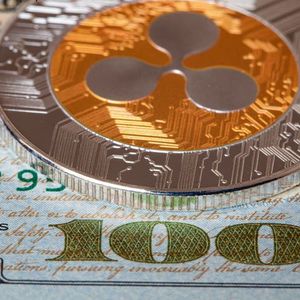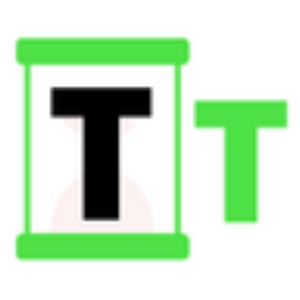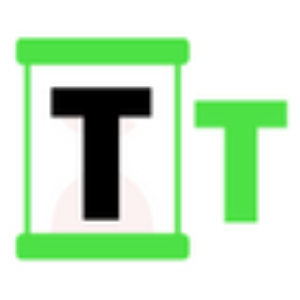Ripple: How A Banking License Could Stir The Still Waters And Reprice XRP
9 min read
Summary Ripple’s pursuit of a national bank charter and Fed Master Account marks a regulatory inflection point, positioning XRP for institutional adoption and compliance. XRP’s resilience and long-term vision have set it apart from peers, with Ripple consistently focusing on bridging traditional finance and blockchain infrastructure. Ripple’s tech stack, including RLUSD stablecoin and asset tokenization, is now enterprise-ready, with growing recognition from major financial institutions. Despite price consolidation, options market activity signals smart money positioning for upside; I rate XRP a strong buy due to asymmetric upside potential. Ripple ( XRP-USD ) has seen a flurry of both product and regulatory updates so far this year. And the company’s decade-long push for regulatory clarity seems to be reaching the most pivotal moment, with the CEO Brad Garlinghouse testifying in front of the Senate Banking Committee in Congress this week, and this follows Ripple’s announced formal application to the Office of the Comptroller of the Currency [OCC] for a national bank charter earlier this month. Ripple has always been regarded as a frontrunner in facilitating dialogue between the crypto industry and regulators. XRP has been (and still is) an interesting and resilient cryptocurrency among the top 10 cryptocurrencies. What piques me about XRP is the consistent resilience it has shown despite the skepticism in the early years of the crypto market, where we had more “ Bitcoin maximalists. ” XRP was often dismissed as an outlier because of the large supply of XRP held by Ripple (the company), and the company’s influence on governance and in the development of the Ripple Network. This created a perceived centralization risk. Ripple’s management has had to clear the air about the network’s decentralized validator model on several occasions. I believe that today, most of the early “maxis” would concede that crypto cannot remain a siloed parallel system if it’s ever going to be adopted at scale by institutional finance. I was once a maxi too, and thought Ripple was too centralized to be taken as a trustless crypto network, but old things are passed away. Below is an X post I made back in 2019 , drawing a comparison between the now-abandoned Meta’s ( META ) (then Facebook) Libra Coin project (later renamed Diem) and the perceived centralization of XRP at the time. Well, Libra failed to gain any traction, but XRP still stands tall. I view XRP through a different lens now, as the broader crypto adoption has become less about the early decentralization dogma. Crypto adoption has evolved to prioritize regulatory compliance and interoperability with traditional finance systems. when author was a maxi 🙂 (X) Despite the early concerns (or misconceptions, as Ripple’s management calls it) surrounding the governance structure of the Ripple network, XRP has held strong and has remained among the top 10 cryptocurrencies for over a decade. Several other top-ranking cryptocurrencies that faced similar scrutiny from early maxis have not fared nearly as well. Examples of formerly top cryptocurrencies like IOTA ( MIOTA-USD ) – which faced regulatory and adoption challenges due to its heavy reliance on the IOTA Foundation and the centralized risk it posed, EOS ( EOS-USD ) – a highly visible project that raised over $4 billion in its 2017–2018 ICO but was later criticized for its delegated proof-of-stake [DPoS] model where just a handful of block producers controlled governance, and NEO ( NEO-USD ) – similarly scrutinized for centralized node control and token unlocks managed by the NEO Foundation. All of the aforementioned cryptocurrencies (which faced similar criticism as XRP) have mostly lost traction and fallen off the top 100 cryptocurrencies by market cap ranking despite their high-profile launches and significant early backing. Some have since rebranded, but they remain largely irrelevant in most of today’s crypto conversation. There is something notably enduring about the company behind the Ripple network and XRP. The company has a kind of long-game conviction that is rare in the crypto space. We see companies or developers behind crypto projects pivot in almost every market cycle to make their blockchain network the go-to platform for the trending narrative. When NFTs were an explosive narrative, several other blockchain networks were reengineering themselves to chase the NFT trend. And more recently, as AI has become an anchor narrative, we’ve seen a slew of AI token launches and protocol pivots designed to capture attention in the decentralized AI narrative. But for Ripple Labs, it has always been about its day-one vision of modernizing cross-border finance using blockchain infrastructure and bridging the gap between traditional finance and decentralized payment rails. Every follow-up product in the Ripple ecosystem has been tied to this foundational thesis. Ripple has not only survived but matured while others faded, and it is now nearing its regulatory inflection point. At this juncture, based on all of Ripple’s product updates in the past year and the recent application for a banking license, the company is doubling down on its original theme of bridging traditional finance with blockchain rails and modernizing global finance through blockchain tech. In every sub-narrative that is related to Ripple’s overarching theme of bridging traditional finance with blockchain rails, Ripple has not been found wanting in terms of products. Ripple has, at the minimum, launched products that sit well among the competition in the current two most important verticals that bridge traditional finance and blockchain tech – stablecoins and asset tokenization. You can’t talk about modernizing traditional finance without stablecoins and asset tokenization. The launch of the RLUSD stablecoin late last year couldn’t have come at a much better time, with the GENIUS Act recently passed, now pending House approval, and Ripple’s ongoing push for regulatory compliance placing its stablecoin in a prime position for adoption. RLUSD currently has around $500 million in market cap. Though it is still modest compared to Tether ( USDT-USD ) or Circle’s ( CRCL ) USCoin ( USDC-USD ) with $159 billion and $62 billion in market cap, respectively, Ripple’s decade-long push for regulatory clarity, combined with the tech and regulatory stack it has built over the years, means the prospect for enterprise-grade, compliant stablecoin adoption is now stronger than ever. RLUSD is a strong contender because it was built on a compliance structure. Asset tokenization on the Ripple Ledger has quietly matured, and the ledger is becoming recognized as a go-to RWA tokenization platform. I caught the early signals of tokenization on XRP Ledger and the opportunities it presented, and I wrote about it in one of my Ripple coverages last year titled: “ Ripple: Asset Tokenization Presents Fresh Catalyst .” That piece has aged well, and since that publication in February last year, XRP is up an impressive 370%. Ripple has not been left behind its peer blockchains in the broader conversation of asset tokenization. Just like peers like Ethereum ( ETH-USD ) and Avalanche ( AVAX-USD ) are seeing growing institutional experimentation, Ripple is also seeing accelerating traction in the RWA narrative on its network. And the notable thing is that Ripple is being recognized by major financial institutions as a potential backbone infrastructure for RWA. Bitwise recently highlighted tokenization on the XRP Ledger as a strong tokenization platform. To further weave together the tech stack, Ripple recently integrated Wormhole into the XRP Ledger, giving developers and institutions seamless cross-chain interoperability to move tokenized assets across ecosystems. Ripple’s tech stack (especially after Wormhole integration) is at its peak utility to date. Then, the banking license (which I call the keystone piece in Ripple’s playbook) is the regulatory interlock that could activate the mass adoption of and institutionalization of all of Ripple’s tech infrastructure built over the past decade. You see where it’s all converging? How The Banking License Changes Everything For Ripple I strongly believe at this point that the banking license is within reach for Ripple. Anchorage Digital already holds a national trust charter from the OCC , and has since operated as a federally chartered crypto bank, setting a regulatory precedent that strengthens Ripple’s case. Anchorage also cleared the regulatory hurdle to secure the BitLicense from the New York State Department of Financial Services [NYSDFS] late last year. Ripple is also looking at this dual oversight on the state level through NYSDFS’ BitLicense and the federal level via the bank charter. Another icing on Ripple’s regulatory stack is that it is pursuing a Fed Master Account, which, if approved, would give Ripple the authority to custody RLUSD directly with the Fed. Empowered by this, RLUSD would effectively become one of the most institutionally sound stablecoins in the market, backed by both fiat and by infrastructure tied directly to the U.S. central banking system. And I think the bigger picture will be that Ripple’s rails will potentially have direct access to Fed clearing systems like ACH and Fedwire, placing it on the same foundational level as traditional banks. Furthermore, the bank charter would potentially give Ripple the legal authority to act as a fiduciary custodian for tokenized assets. The banking license and the Fed Master Account tie every single thread together for Ripple. XRP’s Consolidation: Smart Money Is Positioning for A Stir The market seems not to be pricing the bigger picture into XRP yet, especially considering crypto’s broader momentum so far this month and since the application for a banking license was announced earlier this month. XRP has been consolidating above $2 for several weeks. But what’s impressive when you zoom out is that XRP has held well above that price for most of the year, since last November’s meteoric rise of nearly 300%. XRP meteoric rise in Nov. 2024, followed by ranging between $2 and $3 (Seeking Alpha) XRP’s consolidation between $2 and $3 for most of 2025 has most likely frustrated retail sentiment and created a false impression that XRP is underperforming. Like I said earlier, XRP has held well above $2 for most of the year. XRP’s spot open price in November last year was $0.51; since XRP closed that month at $1.94, it has held and ranged strongly above that level. In fact, XRP dipped below $2 only in the second week of April, when the U.S.-China tariff war was in full swing. While XRP price action could seem boring to retail lately, traders on volatility desks are telling a different story through the options market. XRP notional open interest on Deribit keeps surging over the last weeks, and the notional value of open interest in XRP has climbed by 45% in two weeks, from $71 million about two weeks ago to $103 million as of writing (July 11). And the flows have skewed bullish, as there are currently way higher calls than puts. The put/call ratio is currently 0.37, suggesting that traders are overwhelmingly positioning for upside. Open interest in XRP options (Deribit) From the preceding Deribit dashboard screenshot, we can see a growing number of calls around the higher strike prices, compared to fewer puts at the lower strike prices. And notably, at $3 strike prices, there are 3,024 calls at $7.8 million notional value. And at $4 and $4.2 strike prices, there are 5,200 combined calls, and some speculative positioning is even appearing at the $6 to $7 strike range. Risks With the prospects for a banking license and mass adoption laid bare in this article, it is only fair to mention that there are always risks associated with holding or trading cryptocurrencies, including XRP. The onus of approving any of the licenses lies with regulators, and there is no guarantee that such approval will finally come to fruition. There is some speculation baked into the thesis. Also, while the crypto market appears to be in a rebound phase, with Bitcoin ( BTC-USD ) setting a new all-time high above $118,000, and ETH trading slightly above $3,000, there is still a forward-looking macro risk from tariffs. News outlets reported that the earlier July 9 deadline for reciprocal tariff decisions was moved to August 1, which is just a few weeks away. That risk, and the potential reaction from the broader market if tariff tensions re-escalate, still looms largely. I personally feel that we are not yet out of the tariff overhang until some clear trade deals are announced or negotiations visibly progress. Takeaway I think XRP is fundamentally stronger today than it was during its last bull run, but it is priced as if nothing much has changed. If ongoing positive sentiment in the crypto space catches up to what Ripple has built, and more importantly, if the banking license and the Fed Master Account gain approval, XRP has the potential for one of the most dramatic re-ratings among top altcoins. Excerpt from a previous Seeking Alpha coverage (Seeking Alpha) As the options market shows, smart money is slowly positioning. In one of my previous coverages of XRP, I mentioned that XRP wasn’t one of my favorite altcoins for this market cycle, but I still rated it a buy because of the post-election momentum cryptocurrencies were seeing at the time. Since then, the GENIUS Act has passed the first approval phase and will likely head to President Trump’s desk. Ripple’s banking license push has more credibility and momentum to it than it ever had, and the price has been under heavy consolidation. Based on these developments and the asymmetric upside potential here, I believe that XRP is a strong buy at these levels.

Source: Seeking Alpha



